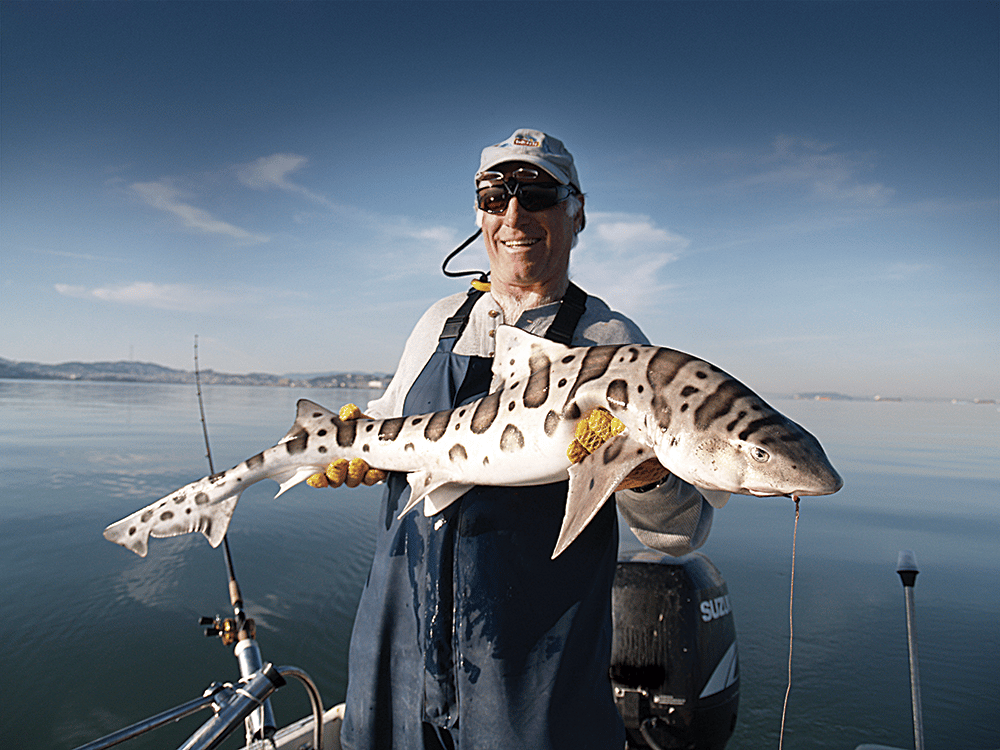
It is a rare body of water where sharks cannot be found, so it was no surprise somebody chowed down within minutes of my bait touching bottom. My rod tip went down, nearly touching the water, and line zipped off my reel. “OK, guys, stay ready. I see more marks on the fish finder; it shouldn’t take long,” I said to Bob Akers and his nephew, Taylor Weisbarth. Sure enough, both were soon hanging on to thumping rods.
Fancy footwork follows when you have a triple hookup, but our dance was more stumble-and-fumble around the anchor rope. Nevertheless, we gradually gained control, and soon three handsome leopard sharks were thrashing on top. They all were prime specimens over 50 inches, and one by one we carefully released them, not yet realizing this was only a warm-up. The breakfast bell was ringing, and with diners lining up below, the action came fast. When the tide finally fizzled out, we had released 25 hard-fighting leopards. Everybody was complaining about sore arms, so the break was appreciated, but that’s to be expected when you go sharking in Frisco Bay.
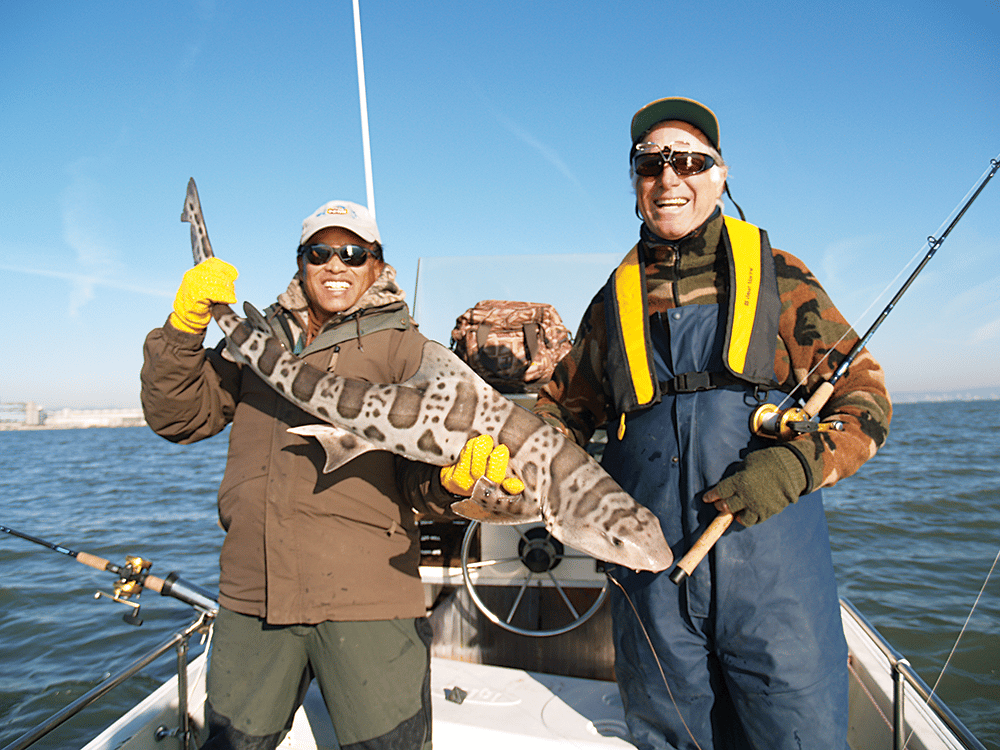
Urban Environment
San Francisco Bay is one of the West Coast’s largest estuaries. Remarkably enough, although the bay’s natural state has been forever changed by the surrounding urban landscape, the shark populations remain healthy. In fact, the events described took place just northeast of busy San Francisco International Airport. The constant roar of passing jets kept things in perspective, and despite the noise, we were still getting tons of action.
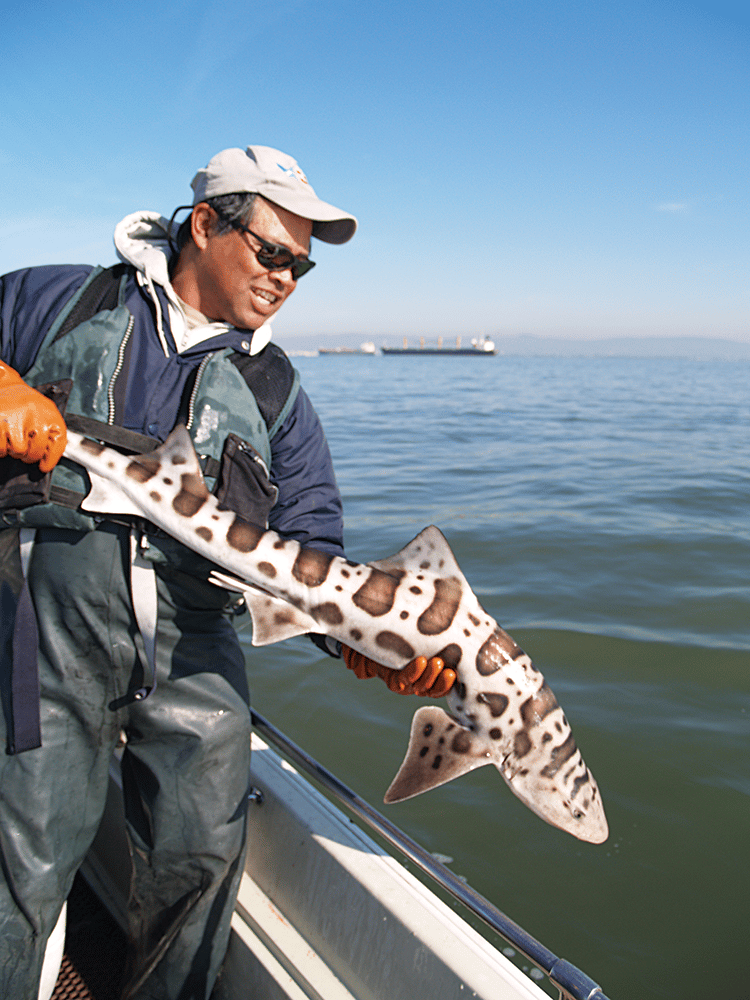
Wild Characters
Leopard sharks come attired in a beautiful silver-gray suit, highlighted by black spots, as their name implies.
Typically 36 to over 50 inches in length, these tenacious fighters test one’s ability to the very end. Their abundance and their aggressive nature make leopards an excellent species to target, but they are not the only likely game in San Francisco Bay. Spiny dogfish, brown smooth-hound, soupfin and sevengill sharks can also charge into the ring unannounced. The menagerie certainly makes for an interesting guessing game, particularly for young anglers.
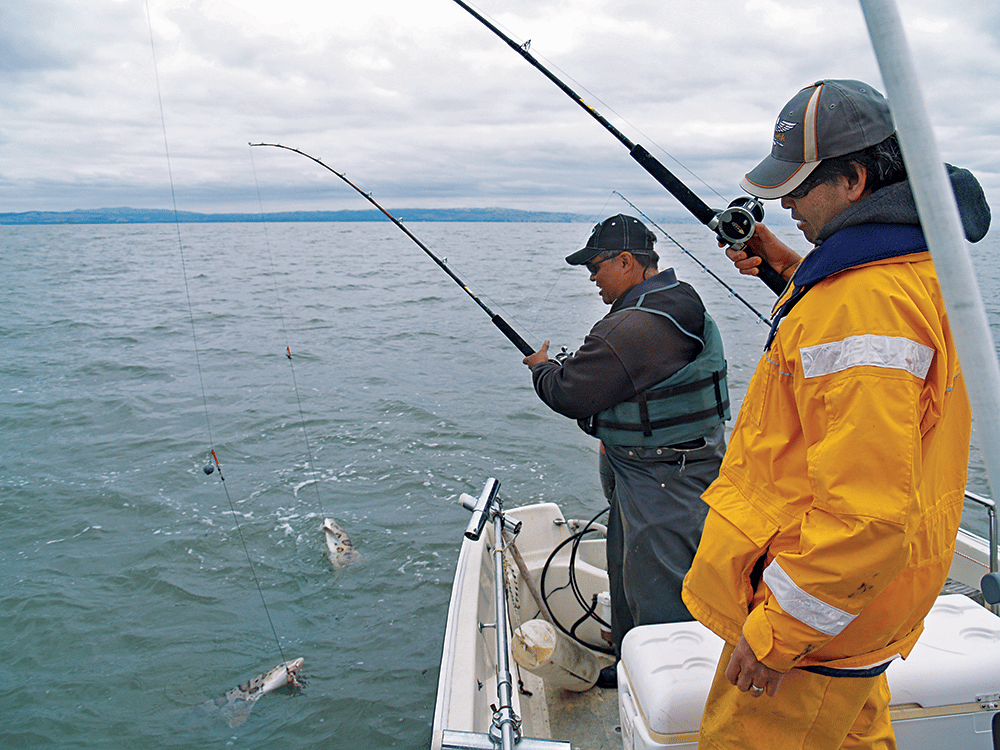
Year-Round Sharking
Leopards become especially active when schools of herring begin staging near the shipping channels, in depths from 30 to over 40 feet. This takes place generally from November to early March. However, even once the herring eventually move out, leopard sharks and their friends remain, allowing you to continue enjoying good action the rest of the year.
Prolific Zones
Leopard sharks are found almost everywhere in San Francisco Bay, but I tend to find them where bottom depths go beyond 30 feet. Shipping channels run the length of the entire bay, so the northern, middle and extreme southern areas all sit minutes from any number of public boat launches.
At San Pablo, on the bay’s northern reaches, either side of the shipping channel that runs roughly in a northeasterly direction will produce. Heading south, action awaits on either side of the Richmond-San Rafael Bridge. Below the bridge on the Marin side, California City is a good bet. To the east, the more productive water lies from Southampton Shoals to Berkeley. West of Berkeley, Angel Island usually pays off. East of the famous Golden Gate Bridge on the San Francisco side, Crissy Field also holds leopards. Farther south, the channel edges from the San Francisco-Oakland Bay Bridge to the San Mateo Bridge, down to the Dumbarton Rail Bridge at the southern end of the bay, host sharks as well.
Since my home base is in the southern part of the bay, I hit that area most often. I’ve had great action off the western shore, from AT&T Park south to San Francisco International Airport. It’s a big stretch of water loaded with sharks. Private boaters can access this area easily by launching from Oyster Point Marina.
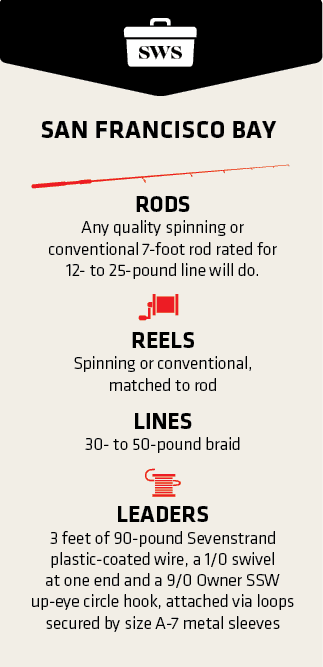
Appropriate Tides
I especially like a morning incoming tide. Sharks are generally active at this time, and wind is seldom a factor. But moderate incoming and outgoing tides will both generate action, particularly during the initial push. Weak tides are productive when working deeper water; the current then flows at a pace more suitable for fishing. Slack water, nevertheless, may also have its moments.
Anchoring Advice
Setting up in water from 30 to over 40 feet puts you in shark territory anywhere in the bay. If I mark a dense school of herring on the finder, I anchor right on that spot. In the absence of herring schools, I scan along the edge of a shipping channel, moving in an “S” pattern, traveling down current. Once I pick up images of sharks just off the bottom, I turn bow first into the current and drop anchor. Use common sense: Don’t anchor in a busy channel.
Baits of Choice
Herring, anchovies, squid, mackerel, sardines, midshipmen, salmon, salmon roe, tuna, and American shad are all good baits. With shad or any larger bait, fillet both sides and cut each fillet into 2-inch chunks. Then impale a single chunk on the hook.
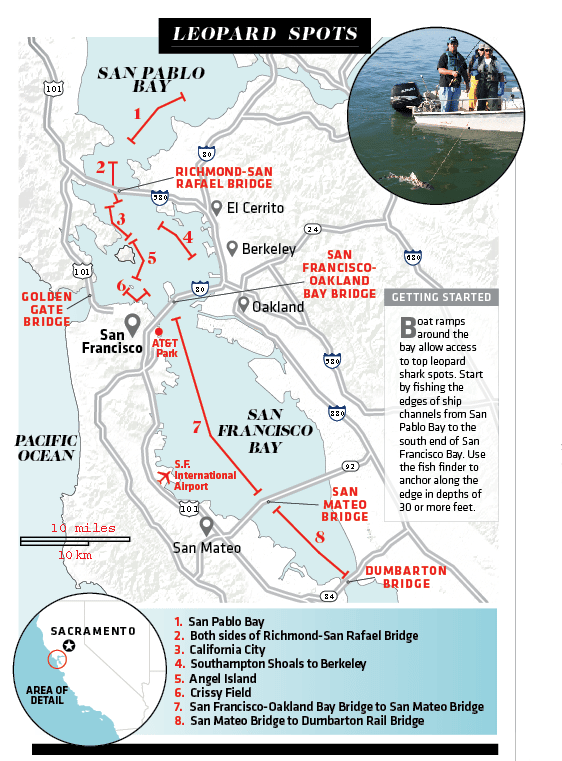
Feed the Cat
Four to 8 ounces of lead hold the bait on the bottom. Cast some lines short and drop others back to provide more coverage and create a scent trail. When a leopard comes calling, you’ll see sharp raps at the rod tip before it goes down. That first hookup often triggers more bites because leopards rarely travel alone. Although leopard sharks are good eating, I prefer to release them, so I opt for circle hooks.
Slack-water Tactic
Slack water has its moments, but it might require re-rigging. At times, you see leopards on the depth finder rising well off the bottom as the current dies. When this happens, I take off the sinker, cast the bait, then strip out 40 to 50 feet of line to allow it to sink slowly. Next I place the reel on free-spool with the clicker on. When a leopard attacks and dashes off with the bait, you’ll hear that clicker scream — talk about jumping out of your boots!









